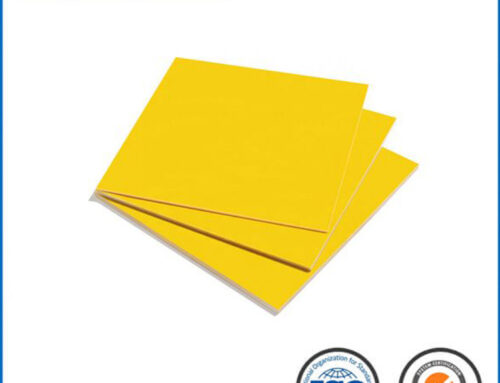FR4 black sheet and G10 black sheet are both types of fiberglass-reinforced plastic laminates that are commonly used in electronic and mechanical applications. While they share many similarities, there are also some key differences between the two materials.
FR4 Black Sheet:
FR4 black sheet is a type of fiberglass-reinforced plastic laminate that is made from woven fiberglass cloth and an epoxy resin. The black color of the FR4 sheet comes from the use of a black pigment in the epoxy resin. FR4 black sheet has several desirable properties that make it suitable for use in a wide range of applications:
- High temperature resistance: FR4 black sheet can withstand temperatures up to 130°C without degrading, making it ideal for use in high-temperature applications.
- High mechanical strength: FR4 black sheet has high mechanical strength due to its fiberglass reinforcement. It is resistant to impact, flexing, and bending, making it ideal for use in applications where the board needs to support heavy components or endure mechanical stress.
- Good electrical insulation: FR4 black sheet has excellent electrical insulation properties, which makes it ideal for use in electronic applications. It has a low dielectric constant, which means that it can insulate against electrical current and prevent electrical arcing.
- Chemical resistance: FR4 black sheet is resistant to a wide range of chemicals, making it suitable for use in harsh environments. It is resistant to most acids, bases, and solvents, which means that it can be used in chemical processing applications.
G10 Black Sheet:
G10 black sheet is a type of fiberglass-reinforced plastic laminate that is made from woven fiberglass cloth and a phenolic resin. The black color of the G10 sheet comes from the use of a black pigment in the phenolic resin. G10 black sheet also has several desirable properties that make it suitable for use in a wide range of applications:
- High mechanical strength: G10 black sheet has high mechanical strength due to its fiberglass reinforcement. It is resistant to impact, flexing, and bending, making it ideal for use in applications where the board needs to support heavy components or endure mechanical stress.
- Good electrical insulation: G10 black sheet has excellent electrical insulation properties, which makes it ideal for use in electronic applications. It has a low dielectric constant, which means that it can insulate against electrical current and prevent electrical arcing.
- Chemical resistance: G10 black sheet is resistant to a wide range of chemicals, making it suitable for use in harsh environments. It is resistant to most acids, bases, and solvents, which means that it can be used in chemical processing applications.
The main difference between FR4 black sheet and G10 black sheet is the type of resin used in their manufacture. FR4 black sheet is made from an epoxy resin, while G10 black sheet is made from a phenolic resin. While both types of resin have similar properties, there are some differences in their performance. Epoxy resins tend to have higher temperature resistance and better chemical resistance than phenolic resins. However, phenolic resins tend to have better electrical insulation properties and are more cost-effective than epoxy resins.
In terms of specific applications, FR4 black sheet is commonly used as a substrate for printed circuit boards (PCBs), in power electronics, LED lighting, automotive electronics, and industrial control systems. G10 black sheet is commonly used in mechanical applications, such as gears, bearings, and bushings, as well as in electrical insulation applications, such as insulators and terminal blocks.
FR4 black sheet and G10 black sheet are both high-performance materials that have a wide range of uses in electronic and mechanical applications. While they share many similarities, the type of resin used in their manufacture can affect their specific properties and performance.




